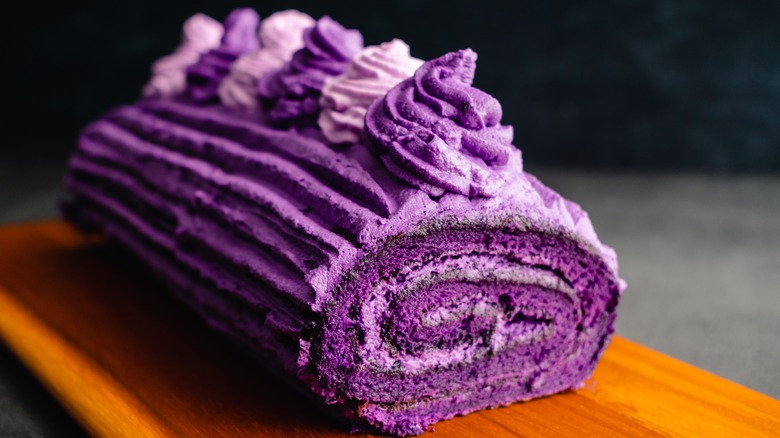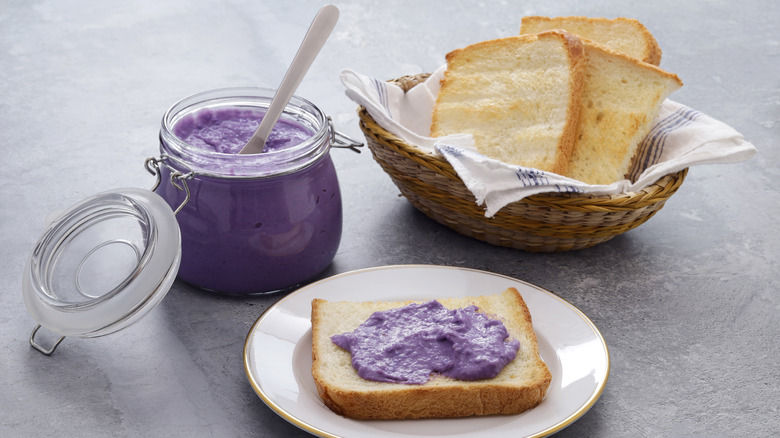What Makes Ube Desserts Special To Hawaii
Wait, is that a purple donut? Purple ice cream? Purple cheesecake? Well, it isn't food dye, it's ube!
Ube are purple yams. Not to be mistaken for the famous Okinawan sweet potato or the Japanese taro, the ube yam is a root from the Philippines and is most commonly used in Filipino desserts. According to the Hawai'i 'Ulu Cooperative, ube gets its florid purple color from anthocyanins, antioxidants that may help prevent cardiovascular disease and cancer (via Healthline).
Surprisingly, its astonishingly royal color is not the only reason why ube is so popular in Filipino and Hawai'ian cuisine. The purple yam is most frequently turned into a jam but can also be bought as a powder or extract (via Apwa Gardens). It is used in a variety of sweet treats in Hawai'i and gives them an unmistakable color, a rich purple hue that even artificial dyes can't mimic.
Today, ube is especially prevalent in Hawai'i, even though the yam and its most well-known halaya recipe are originally native to the Philippines. But how did ube make its way to the island state and why is it so special?
How ube came to Hawai'i
So, how did a small yam in the Philippines manage to make such a big splash in Hawai'i? We can easily credit the Asian diaspora in the state. In the 1850s, the colonial government in Hawai'i created a system that encouraged immigrant contract workers to find jobs in the island's sugar plantations (via The Archival Collections at the University of Hawaiʻi School of Law Library). The influx of Filipino workers brought with it an increase in Filipino traditions and customs, including ube. In 1916, there was a notable influx of immigration from the Philippines to Hawai'i and, according to AAPIdata.com, Filipinos have become the largest Asian ethnic group in the state today.
Hawai'i has fusion-based cuisine throughout its islands and Filipino food specifically has been making its way out of the home and into the public eye, which is why ube has become so popular. Most recently, to empower Filipino chefs and restaurants, the Philippine Consulate General in Honolulu and the Filipino Food Movement have built up a nonprofit organization to encourage and preserve Filipino cuisine in Hawai'i.
The growing popularity of ube in everything from cocktails to cake is a result of this movement, and the history behind it is why ube is held in such high regard in Hawai'i.

